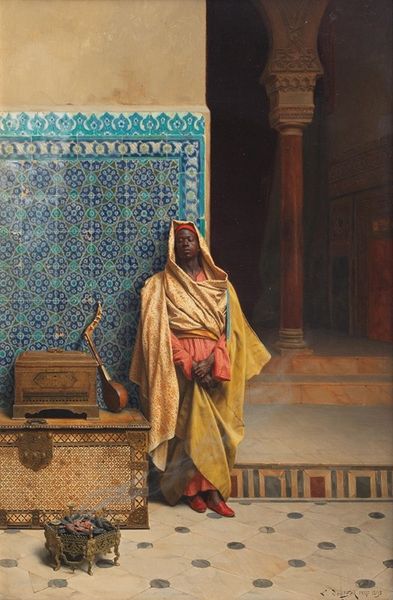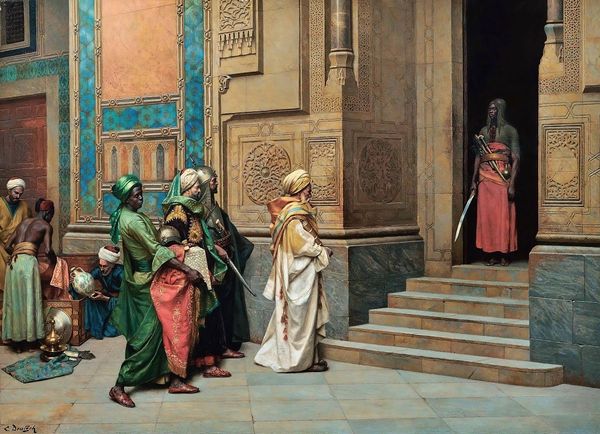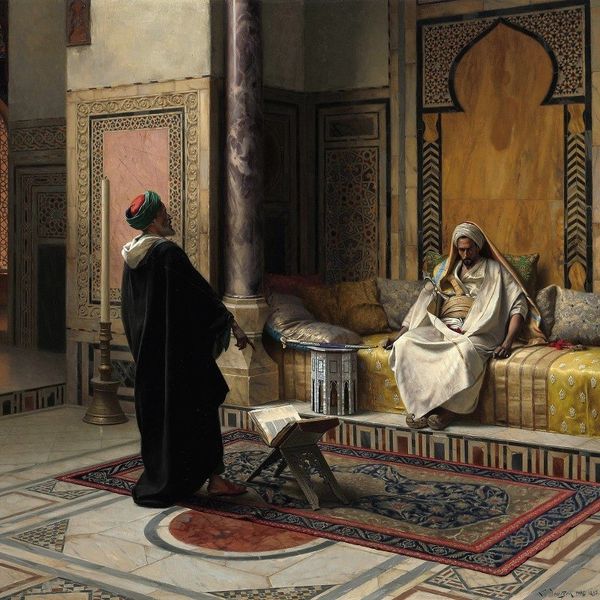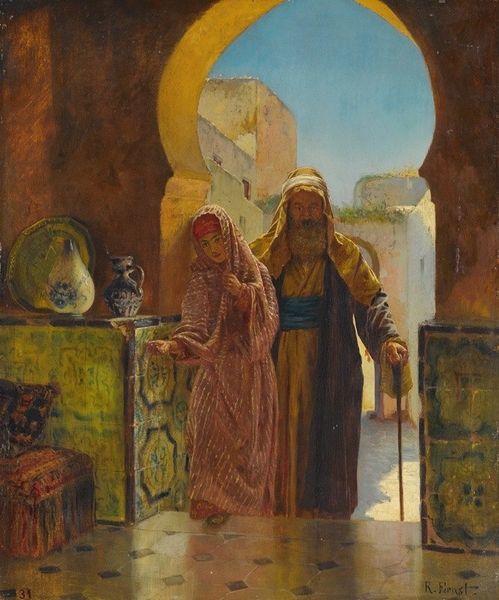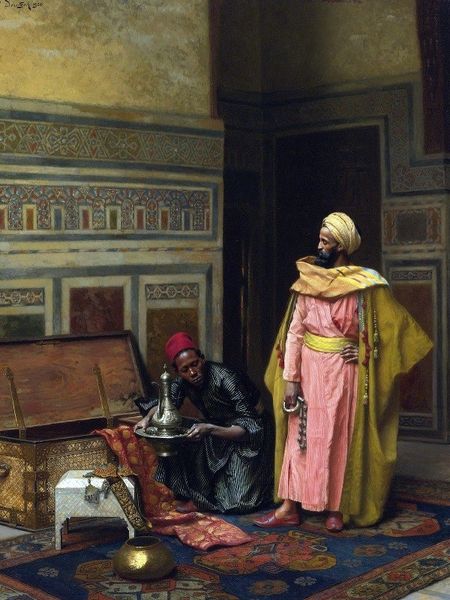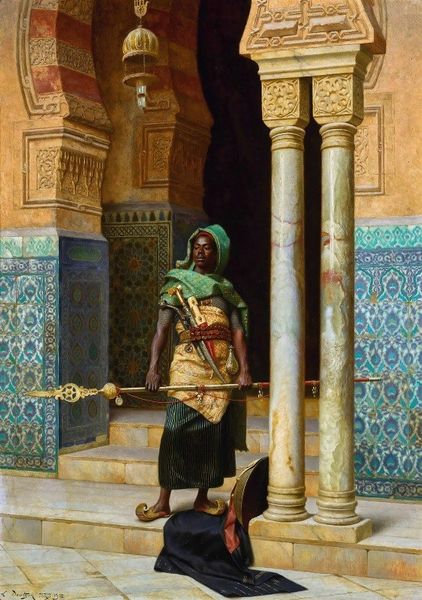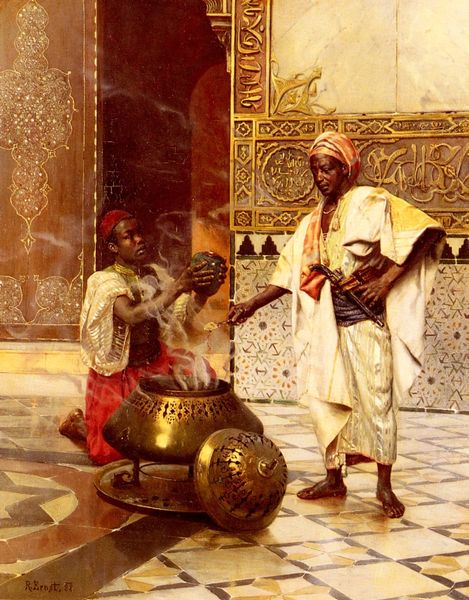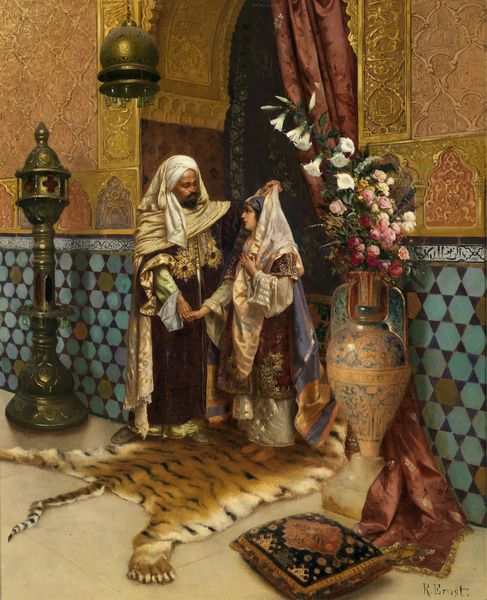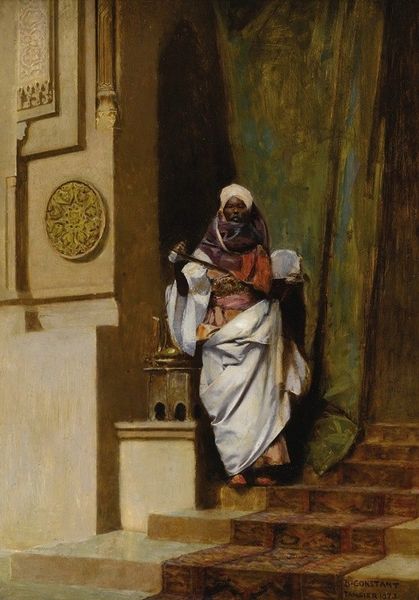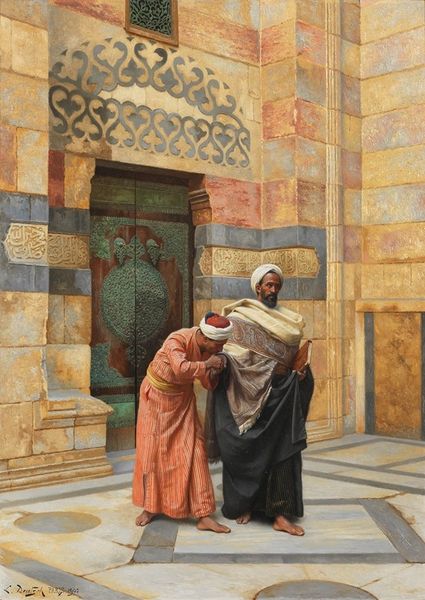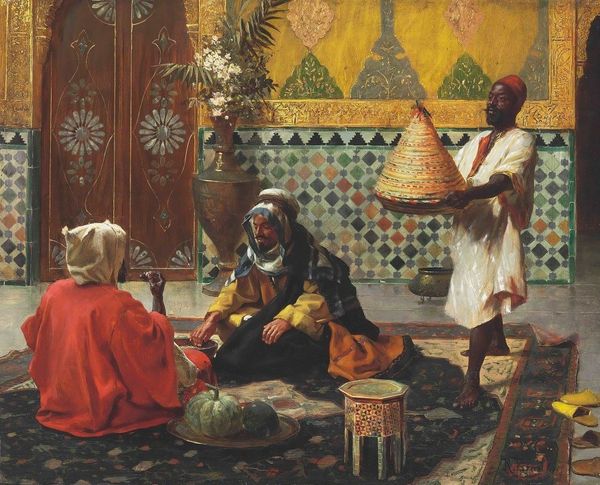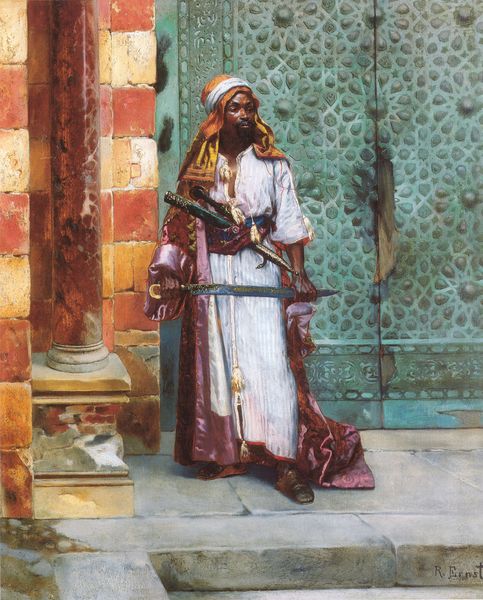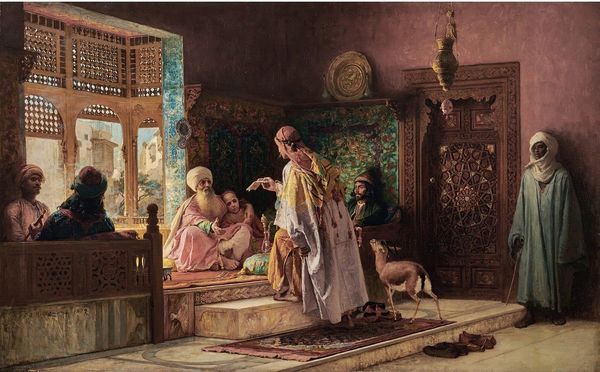
painting
#
figurative
#
painting
#
figuration
#
orientalism
#
islamic-art
#
genre-painting
#
academic-art
Copyright: Public Domain: Artvee
Rudolf Ernst painted "The Dozing Guard," part of the Orientalist movement in the 19th century, a style marked by European artists' romanticized depictions of the "East." Consider the power dynamics at play during this era. Europe was expanding its colonial reach, and paintings like this served to exoticize and otherize non-European cultures, reinforcing a sense of European superiority. We see the guard, a Black man, in a state of repose, perhaps suggesting a lack of vigilance or discipline—a trope often used to justify colonial rule. Ernst, like many Orientalist painters, did not have deep, sustained engagement with the cultures he depicted, which highlights how these images were more about European fantasies than accurate representation. The emotions evoked here are complex: there is a visual richness, but also a sense of distance, a barrier between the viewer and the subject. Ultimately, "The Dozing Guard" invites us to reflect on the gaze through which we view art and history, and to question whose stories are being told, and for what purposes.
Comments
No comments
Be the first to comment and join the conversation on the ultimate creative platform.
